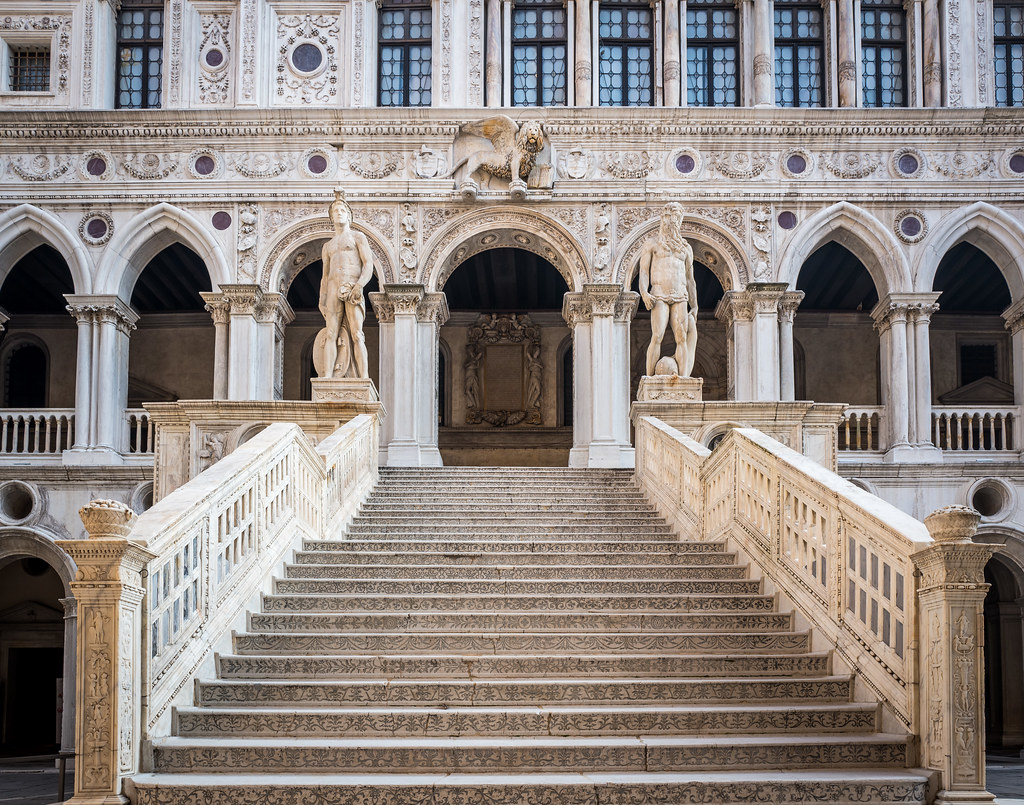Antonio Rizzo, a renowned architect in his day, was trying not to give in to panic as he collected his belongings, made secret night travel arrangements, and finally fled the city in a rush. He had been found red-‐handed, having just stolen 12 thousand ducats from the State coffers, and he knew the punishment would have been serious if he’d stayed a day longer; the Venetian state was not forgiving with such crimes. So he took refuge in the town of Foligno close to Perugia, where he managed to escape justice.
At the time, Rizzo was working on finishing the new Scala dei Giganti in the courtyard here, a project that still surprisingly bears his name although it was actually finalised by another architect. The job had originally came up rather fortunately after a serious calamity, as in 1483 a terrible fire had destroyed this part of the Palazzo, causing irreparable damage to much of the courtyard and first floor of the Palace. However, Doge Francesco Foscari, as ambitious as he was wealthy, took the opportunity to make something better and bigger, an imposing elegant staircase which would, finally, connect the courtyard to the upper balconies of the first floor.
Though this is now known as the Scala dei Giganti -‐ the Staircase of the Giants -‐ Neptune and Mars made their appearance on the top only in 1567. Venice’s power over the sea and over the land were undisputed, and of this visitors ascending the steps should be reminded, as they walked between the Greek gods,
Looking up to the winged Lion of St. Mark’s, which seemed to tower over Pagan gods and men alike.







